Not everything you need for the outdoors has to be bought brand new. This outdoor gear guide will help you answer the question—”buy new or used?”
With the massive growth in outdoor recreation, many of us are getting excited to add to our “kit” of outdoor gear. It’s fun to dream of upcoming trips while browsing the aisles of your local outdoor store. However, all of that equipment does have an environmental impact, from the raw materials used to make it to the fossil fuels used to transport it. Plus, new equipment can be pricey! So, how can we get the gear we need while being conscious of our environmental footprint and our budget? Two words—buying used.
Not everything you need for the outdoors has to be brand new. Below is our guide to some of the most common outdoor items you might have on your shopping list. We’ll break them down to share which ones we recommend you buy new versus used and ones that can go either way. Let’s get started.
Some General Tips When Considering New vs. Used
- Buying used equipment online? A few tips:
- Know the return/exchange policy.
- Make sure to know your size in that brand or product.
- Find out as much detail as you can. Any flaws, rips, holes or other issues? Better to know in advance than to find out on your trip.
- See if there’s an outdoor consignment store or general thrift store in your area to support. Bonus: This allows you to try things on in person which helps big time!
- For items where user safety is paramount, buy it new (examples: helmets, climbing harnesses, carabiners, climbing ropes, etc.)
- Remember that going the used route may take more time. Don’t save your shopping until the last minute.
- Coming on an Outward Bound expedition? You’re in luck! We provide much of the outdoor gear you’ll need for your expedition—shelters, sleeping bags and pads, stoves and cook gear. Questions on specific items? Double-check your packing list or check in with your Course Advisor.
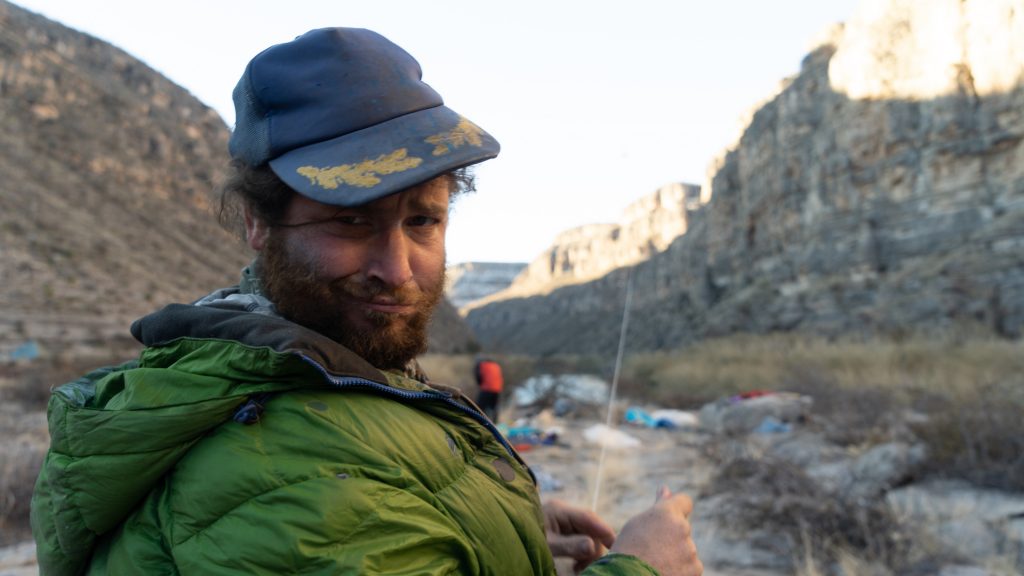
Photo by Mac Gaither.
Puffy Jackets and Fleece Jackets – USED
If there’s one thing I see A LOT of at thrift stores, it’s fleece jackets. So embrace the vintage look and go used.
Down or synthetic insulated puffy jackets in good condition may be a bit harder to come by at thrift stores. If this is the case, online vendors like eBay, REI Used Gear, Patagonia’s Worn Wear or the Poshmark app can be great ways to find used gear and save some money.
Base Layers – EITHER
This one is up to you. There are PLENTY of used base layers (long underwear) lining the shelves of thrift stores. Pro tip: Check the label to see about fabrics. Used synthetic fabrics, like polyester, may retain smells while wool blends may keep the “funk” away.
Going used? Give those armpit areas a sniff before buying. Check the care label to see if the item can be washed in warm or hot water to combat any leftover stinkiness.
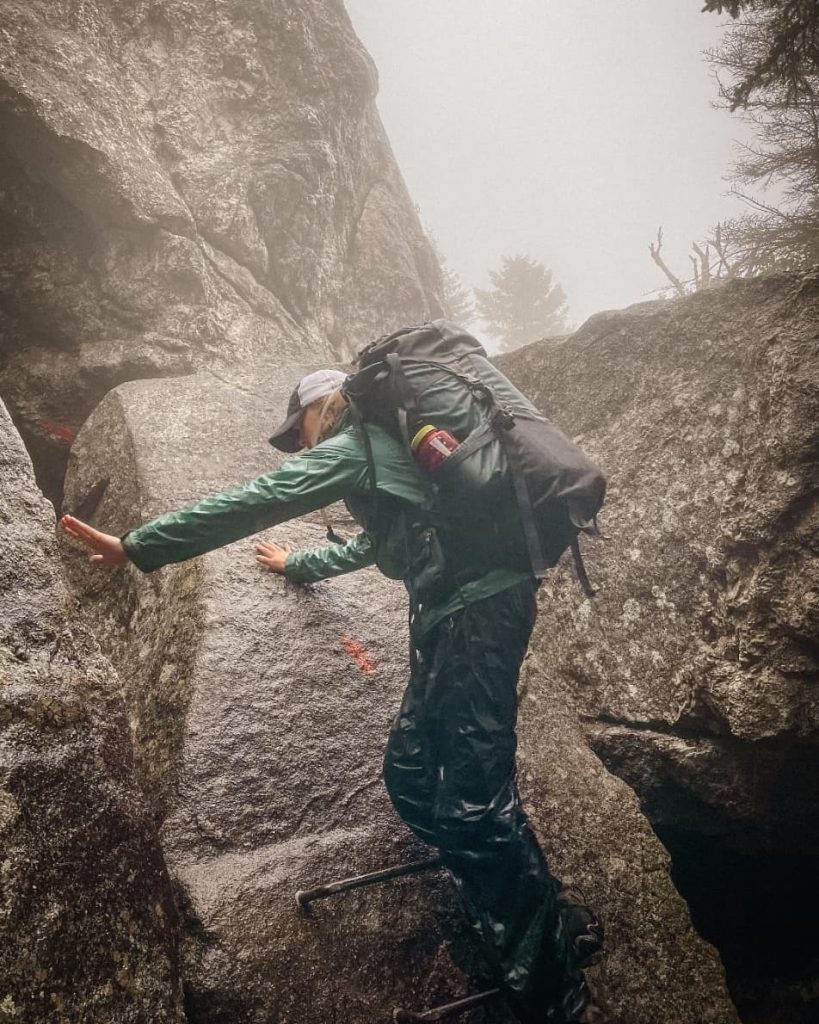
Rain Jacket and Bottoms – NEW
I personally consider rain gear a safety piece. Unless you know that the item is in great condition, we recommend going new with rain gear. Waterproof clothing has a tendency to “delaminate” over time, impacting its water resistance. No one wants to find out in the middle of an afternoon rainstorm that their rain gear doesn’t work.
Going used? Carefully check the interior lining for rips, tears and thinning. Pro tip: Test out your gear before taking it on your trip (go for a walk in the rain, find a friend who’s willing to spray you with a hose, hop in the shower with your rain gear on—get creative!)
Hats and Socks – NEW
Since these have come into close contact with the first owner’s skin we typically recommend buying them new to avoid issues like lice. Pro tip: Companies like Darn Tough offer lifetime guarantees on their products so paying that extra bit now will pay off in the long run.
Going used? Give them a sniff and wash at the warmest recommended temperature.
Gloves – USED
Save some money and go used with these. Try them on before buying or use the manufacturer’s size chart for online purchases to make sure they’ll fit.
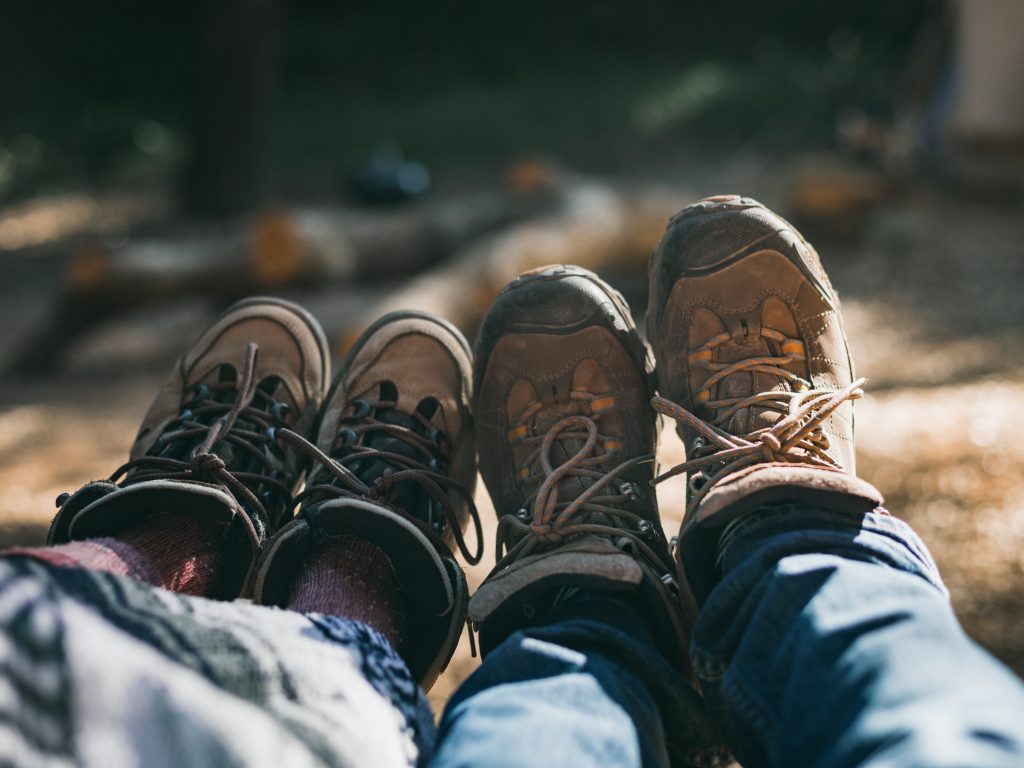
Photo by Andrew Peluso.
Boots – EITHER
Hiking boot fit is paramount to comfort on backpacking trips. While new boots can be on the pricey side, there are big advantages to buying new. I have made the mistake of prioritizing price over fit, and as a result, paid the true price on the trail with sore, unhappy feet. Whether you go new or used, try them on in person and do some laps around the store to make sure they’re the best fit. Pro tip: Bring the socks you plan to wear on your trip when you go boot shopping to ensure the appropriate fit. Don’t buy boots online (new or used) if you can’t first try them on!
Going used? Check for wear: How is the tread on the bottom of the boots? Is the sole peeling off? Is the fabric behind the heel worn out? Consider replacing the insoles with new ones. Your feet will thank you.
Water Bottles – USED
Along with fleece jackets, water bottles might be the items I see most frequently at used gear shops. Outdoorsy folx seem to have a strange obsession with upgrading water bottles. Take advantage of their lightly used discards by buying used. Always remember to wash and sanitize before using.

Photo by Charis Nichols
Pots and Pans – USED
Go used on this one. Putting up with a little ding might save you quite a bit of cash.
Headlamps – USED
These are typically “one size fits most” so no need to worry about fit with headlamps. If the headlamp isn’t working when you buy it, it may be as simple as replacing the batteries, though occasionally, the bulb might need replacement too.
Backpack – NEW
Much like hiking boots, fit is vital here—especially for multi-day backpacking trips. Pro tip: Go to the store, load the backpack up with weight (most outdoor equipment stores have 5-10 lb. sandbags available for this purpose) and do a couple of laps around the store. Having an unsupportive or improperly fitting backpack can really negatively impact your experience.
Going used? If possible, invite a friend or family member with backpacking experience to join you on your shopping trip. Make sure the pack fits comfortably and feels supportive when loaded with weight. Test all buckles, zippers, snaps and straps. Any doubts? Buy it new.
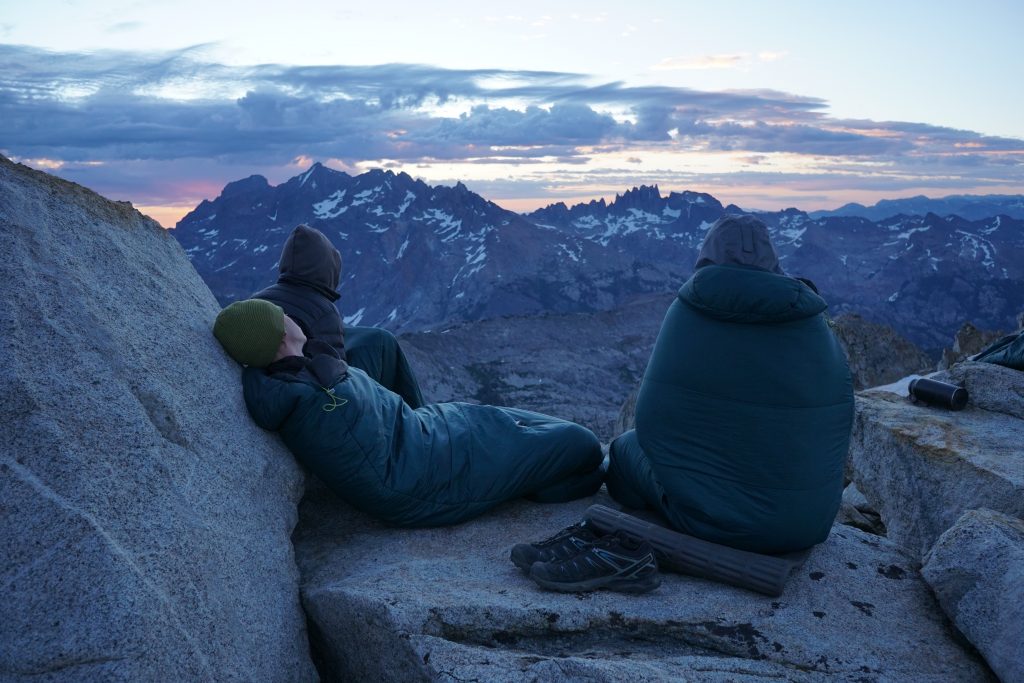
Photo by Rachel Drattler
Sleeping Bag – EITHER
Personally, the idea of sleeping in someone else’s former bedding makes me squeamish. However, I’ve heard stories from friends who have found amazing deals on high-quality used sleeping bags in excellent condition, proof that research and time can save you hundreds!
Going used? It’s important to know that the “loft” (i.e., the insulation and warmth) of a sleeping bag can diminish with use, so the degree rating may no longer be accurate. Wash the bag according to the manufacturer’s instructions. Consider adding a new sleeping bag liner to your cart. These are relatively low in cost and can make that used bag feel a bit cleaner. Pro tip: Test your used sleeping bag out in mild temperatures before taking it into the mountains or colder climates.
Foam Sleeping Pad – USED
Foam pads like the Therm-A-Rest Z Lite or NEMO Switchback are great used options. Since they’re made of foam, there’s no need to worry about the pad popping in the middle of the night.
Prefer an inflatable sleeping pad? Be forewarned that they can pop easily, so make sure to get all the details about the condition before buying a used one online. Pro tip: New or not, always carry a patch kit to fix any holes that might pop up.
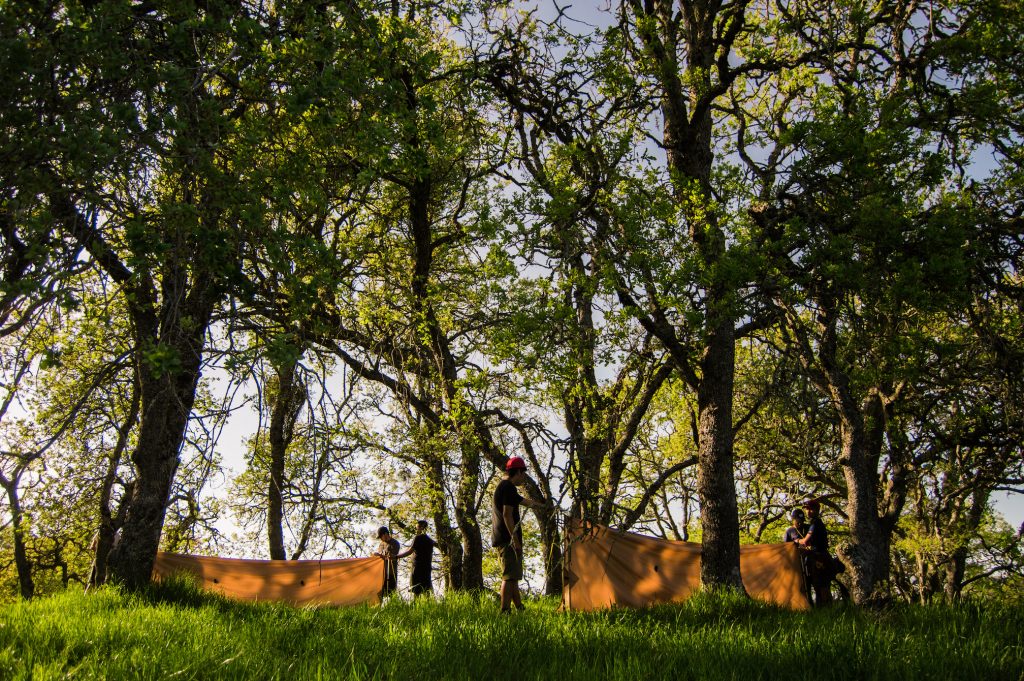
Photo by David Montero.
Shelters (Tents or Tarps) – EITHER
Perhaps I’m an outlier among other outdoor enthusiasts, but when I’m buying a shelter, I want to know for certain that it has no rips, holes, broken tent poles or other flaws. Think of your tent as your foul weather gear for your sleeping hours. That said, buying used might just save you a couple of hundred dollars.
Going used? Make sure to do your research, know exactly what condition the item is in and what the return policy is if you find any flaws. Pro tip: As with sleeping pads, buy a patch kit and check for micro holes before heading out on your first trip with your tent.
Final Review and Thoughts for Your Shopping
- Always wash secondhand clothing, sleeping bags or other items that will be next to your skin.
- Never buy used safety-related climbing equipment (harnesses, helmets, traditional gear, ropes, etc). Used climbing shoes, chalk bags and other non-weight-bearing equipment are the exception to this. For more on climbing gear check out this blog post.
- Not sure what you want? Consider borrowing or renting the equipment first. An increasing number of outdoor equipment stores and collegiate outdoor programs offer rentals so that you can run your own product testing lab – see what you like and what you don’t while saving money in the process!
- Think about your equipment and clothing’s life cycle. Is it an item that’s easy to repair? Will the company repair it for you or replace them if they wear out? How easy is it to recycle or even up-cycle that item? Or will it end up in the landfill?
- Not sure where to start your shopping? Check out this excellent blog post from my friend and fellow Outward Bound Instructor Eva Johnson for websites to peruse. Don’t forget about sites like Craigslist, Facebook Marketplace, Poshmark and eBay.
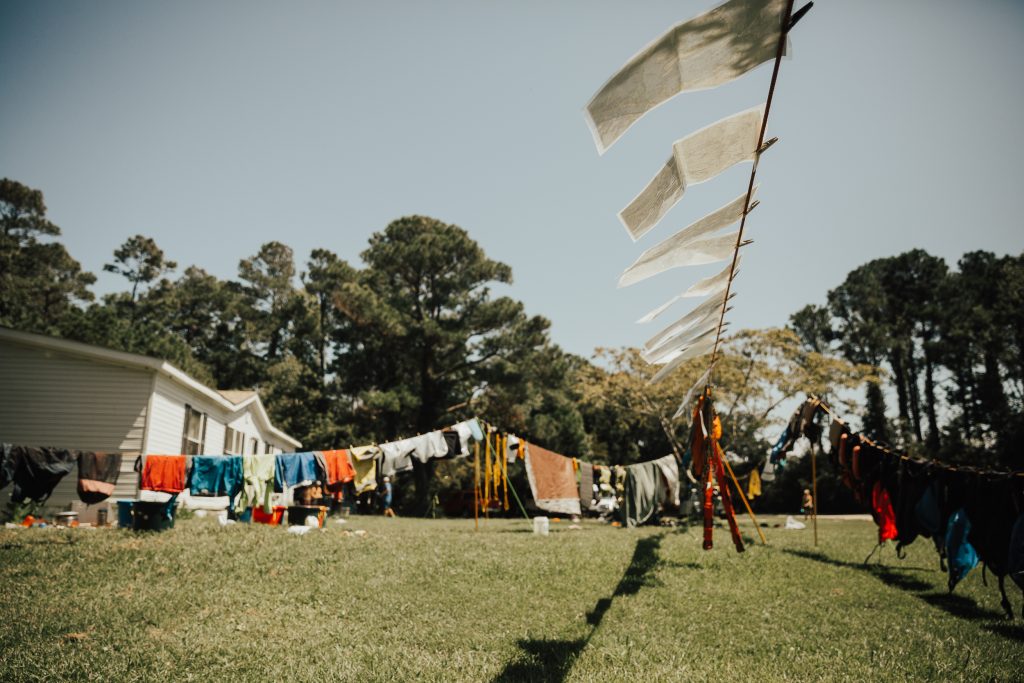
Photo Rachel Veale.
Keep It Going
Remember that purchasing your outdoor gear is just the start, or the second chapter, of its life. By taking good care of your equipment, it will take care of you. So be kind to your gear—clean it after each trip, check it for signs of wear and repair it. Our planet and your wallet will thank you. When the time comes that you don’t need an item anymore, consider up-cycling it, giving it away, reselling or donating. Who knows how long that item will be of use, where it will go and who else might use it?
About the Author
Caitlin loves spending time with people in the outdoors. She aspires to help others cultivate the connections that can happen when we are away from distractions and able to be authentic. Caitlin has been involved with Outward Bound since 2007. She’s worked at Outward Bound California and Colorado Outward Bound School as a Logistics Coordinator/Intern, Instructor, Course Director and Student Services Manager. She also works for Inward Bound Mindfulness Education and Stanford University’s Adventure Program. Caitlin calls the West home and has lived, backpacked and climbed throughout the Western US including Joshua Tree, the Sierra Nevada, Arizona, Oregon, Western Washington, Colorado, Utah and Nevada.




